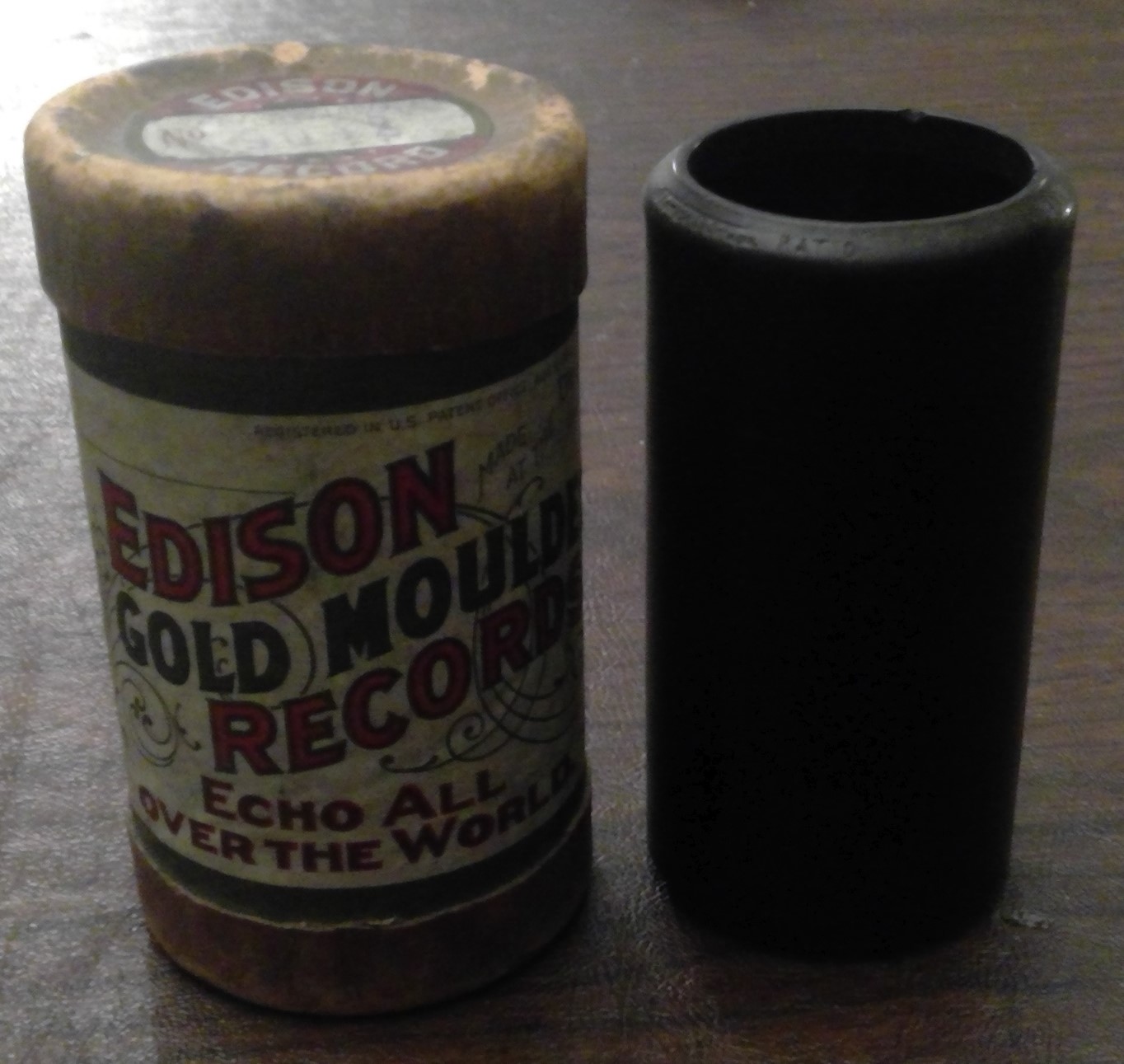
Everyone knows the story of how Edison invented the phonograph. However, several years afterwards, cylinders were becoming obsolete, and many companies started making disc records, which were cheaper, and could store two songs instead of the one offered by cylinders.

A cylinder from my collection
Companies like Victor and Columbia were becoming big names in the recording industry, so Edison's company designed the Diamond Disc, and released it in 1912. It was unlike any other record on the market at the time. The Diamond Disc was 1/4 of an inch (0.635 CM) wide, spun at 80 RPM instead of 78, and used vertically cut grooves instead of laterally cut grooves. As a result, Diamond Discs were totally incompatible with other companies record players. This made it so that Diamond Discs didn't sell as well as competitors records, despite Diamond Discs arguably having nicer sound quality. Another reason why they didn't sell as well was Thomas Edison's hatred of Jazz, which was popular at the time. Jazz Diamond Discs weren't made until the mid 20s. In the late 1920s, some Diamond Discs were electrically recorded, giving them a better sound quality than before. These records are much more valuable than normal Diamond Discs today. Despite the quality, it was not enough to save the brand. In 1929, the vertically cut records were replaced with laterally cut ones, which are now extremely rare, as they were on the market for less than a year. The Diamond Disc was like betamax in a way. It was better than the competitor, but was incompatible, and died a commercial death.
From left to right: etched label, paper label, red star label
There were two main types of labels used by Edison Diamond Discs. The first was the Etched label. It is engraved into the record. The cool thing about it is that you don't have to worry about the label falling off. The bad thing is that they are hard to read. They were used from 1912 to 1921. From 1921 onwards, the "paper label" was used, starting on record number 50813. These are nicer looking and easier to read, but fall off easily. The "red star" label on paper labels were used by the company to denote records that they thought wouldn't sell well. These records are more valuable today.